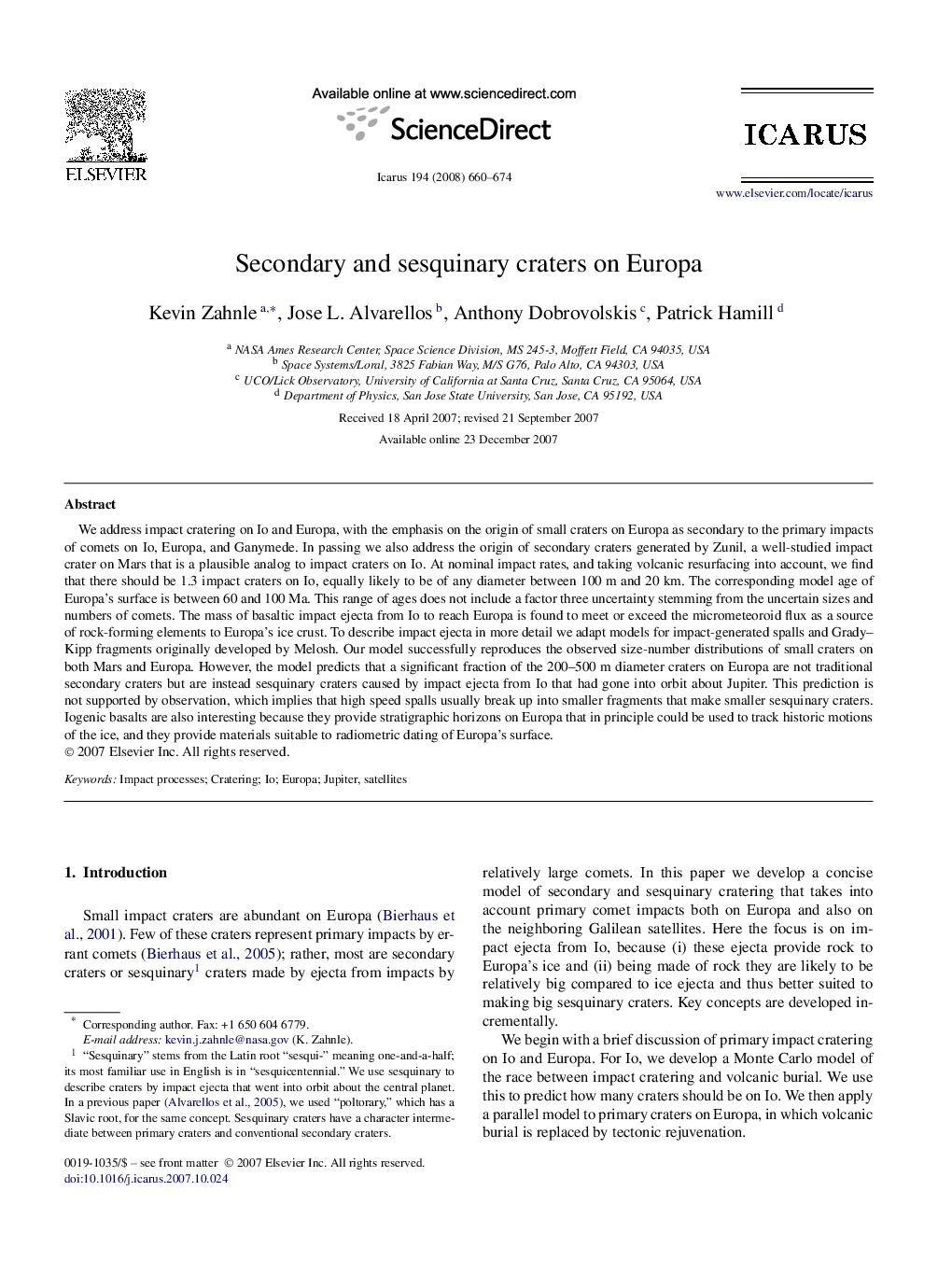| Article ID | Journal | Published Year | Pages | File Type |
|---|---|---|---|---|
| 1775174 | Icarus | 2008 | 15 Pages |
We address impact cratering on Io and Europa, with the emphasis on the origin of small craters on Europa as secondary to the primary impacts of comets on Io, Europa, and Ganymede. In passing we also address the origin of secondary craters generated by Zunil, a well-studied impact crater on Mars that is a plausible analog to impact craters on Io. At nominal impact rates, and taking volcanic resurfacing into account, we find that there should be 1.3 impact craters on Io, equally likely to be of any diameter between 100 m and 20 km. The corresponding model age of Europa's surface is between 60 and 100 Ma. This range of ages does not include a factor three uncertainty stemming from the uncertain sizes and numbers of comets. The mass of basaltic impact ejecta from Io to reach Europa is found to meet or exceed the micrometeoroid flux as a source of rock-forming elements to Europa's ice crust. To describe impact ejecta in more detail we adapt models for impact-generated spalls and Grady–Kipp fragments originally developed by Melosh. Our model successfully reproduces the observed size-number distributions of small craters on both Mars and Europa. However, the model predicts that a significant fraction of the 200–500 m diameter craters on Europa are not traditional secondary craters but are instead sesquinary craters caused by impact ejecta from Io that had gone into orbit about Jupiter. This prediction is not supported by observation, which implies that high speed spalls usually break up into smaller fragments that make smaller sesquinary craters. Iogenic basalts are also interesting because they provide stratigraphic horizons on Europa that in principle could be used to track historic motions of the ice, and they provide materials suitable to radiometric dating of Europa's surface.
